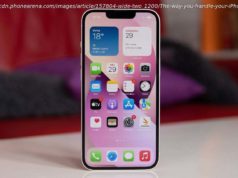Companies have been developing interesting products and services to make the leisurely side of our home lives more connected and more enjoyable.
FOSTER CITY, Calif. — Just as there’s more to life than work, so too, is there more to smart home technology than security cameras, connected thermostats, and other practical solutions to real-world needs.
After all, sometimes you just want to have fun at home.
In fact, companies have been developing all kinds of interesting products and services to make the leisurely side of our home lives more connected and more enjoyable. Streaming music services like Pandora and Spotify, as well as multi-room wireless speaker systems like Sonos, for example, allow people to enjoy the pleasures of synchronized whole home audio without the costs and hassles of running wires all over your house.
Thanks to recent upgrades from Amazon and Google, households with multiple Echo or Google Home smart speakers can also start to benefit from this surprisingly enjoyable feature—once limited to high-end custom homes. For this to work, you’ll need to configure your speakers to function together as a multiroom group in the respective Alexa and Google Home apps, but the process is straightforward. Using Google’s new low-cost Chromecast Audio, you can also connect to other speakers you own — many of which offer higher audio fidelity than the basic smart speaker models — to improve and further extend the experience.
If you’re looking for a bit of variety in the types of wireless speakers you add to your whole home audio system, you’ll want to check out the Bluetooth-enabled speaker bulbs and speaker light from Sony. Introduced at this year’s CES as part of the company’s new LifeSpace UX line of products, the LSPX-S1 Glass Sound Speaker is a unique-looking 360° speaker that is also an LED filament-powered light. Higher audio frequencies are generated by the glass resonating in the air, while lower frequencies are handled by a tweeter built into the light’s base. Along somewhat similar lines, Sony also offers LED Bulb Speakers, which can function both as part of a software-controllable lighting system — including the possibility to change colors — and a multi-speaker Bluetooth audio system. The lights screw into traditional bulb sockets and can be used inside traditional lamps, ceiling fixtures or anywhere else you’d like to have both music and light.
As great as your multi-room speaker system may be, however, it’s still not as realistic as live instruments performing. If you want to take music streaming to that next level, Yamaha’s line of Disklavier connected pianos is the ticket. The high-tech player piano-like Disklaviers have been around for years, but the last few generations, including the Enspire line introduced in 2016, added wireless connectivity, making them the most musical endpoint you can add to your home’s WiFi network.
Taking advantage of the Wi-Fi connection, Yamaha offers a Piano Radio service that lets you stream performances to the piano and have them playback live, with the keys and pedals moving in real time. (There’s also an iOS app available that lets you stream and playback downloaded files.) The latest models have added additional refinements that allow even the subtlest nuances of the original performance to come through. Plus, most offer integrated sound modules that can playback other instrument parts through connected speakers.
Yamaha offers a wide range of Disklaviers, including uprights and grand pianos of various sizes. All of them function normally as regular acoustic pianos, and many of them now include Silent Mode, a handy feature that disengages the keys from the piano strings and lets people practice by listening to a digitally sampled piano through headphones.
If you’d like to further enhance the enjoyment of music streaming throughout your home, what better way to do it than while holding a perfectly presented glass of wine dispensed from a connected wine refrigerator?
Plum, a Silicon Valley start-up, is currently taking pre-orders for its eponymously named wine dispensing machine, an attractively designed, cleverly engineered tabletop device that holds two bottles of wine. The system protects and preserves the wine for up to 90 days by injecting a dual cored stainless steel needle through the bottle’s foil and cork (or even metal screw top), and pumping in a small amount of argon gas, a process that prevents oxidization and maintains flavor.
Built on a technical foundation of a Raspberry Pi circuit board, the Plum has built-in cameras and uses a cloud-connected computer vision algorithm to detect the wine type (over 300 grape varietals and 6 million wines are currently supported) in each of its separate compartments. It then automatically (and independently) sets the temperature for each bottle to the recommended setting.
The built-in 7” screen shows the label for each bottle and even provides additional background information on the specific vintage and the winery from which it came. Other details about the machine are equally exacting. Instead of using plastic tubing to bring the dispensed wine to your glass, the entire pouring mechanism is made from stainless steel, which imparts no flavor to the wine. The large built-in argon gas supply will also last over 150 bottles. This helps avoid the hidden costs of additional argon capsules required by other machines. At $1,499, Plum doesn’t come cheap, but it’s a high-tech wine lover’s dream.
For most people, the idea of a connected home is still primarily focused on the practical. Realistically, the security, energy savings, and other real-world benefits of smart home products will continue to drive this market for some time to come. But, as these, and hundreds of other fun-focused smart home products start to appear, we’re starting to get a glimpse into the connected leisure lifestyle of the future. I, for one, am ready to jump in.
Cabernet, anyone?
USA TODAY columnist Bob O’Donnell is the president and chief analyst of TECHnalysis Research, a market research and consulting firm that provides strategic consulting and market research services to the technology industry and professional financial community.






